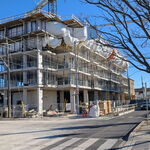It really does seem to me the way this city implemented Leading Pedestrian Intervals is a joke:
It's just meant to slow everyone down unnecessarily.
The Ottawa implementation is way more logical. First a "Straight" arrow appears, then green:
This is in line with Quebec's implementations:
(Thank you at
@reaperexpress for introducing me to
Jackson Bourret!)
Ottawa did it right. Toronto instead penalizes all through-traffic (be it car, bus, or bike), as if the desire were to slow the city down as much as possible.
Three seconds at almost every traffic signal really adds up, and can be counterproductive itself.




